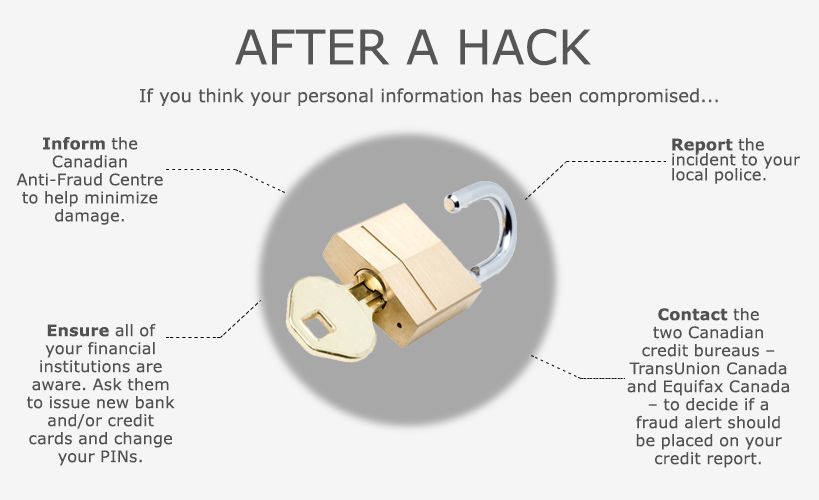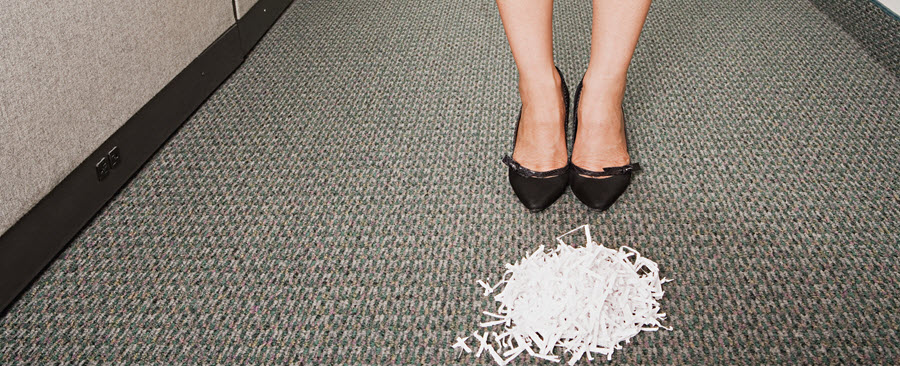9 Simple Ways to Protect Your Identity
Written by Lisa Rostoks
Published on January 16, 2018
minute read
Share:
A few years ago a friend of mine received an unwelcome surprise: a call from a collection agency demanding that he pay up or risk legal action. The debt in question was for a credit card account that he had never opened. When he contacted the agency to dispute the matter, it became clear that someone had used his personal information for financial gain. Authorities believed his mail had been stolen and, ultimately, his identity.
A survey of more than 2,000 Internet users released by Public Safety Canada earlier this year found that five per cent of respondents reported being the victim of identity theft in 2016, up from two per cent in 2011. Separately, 32 per cent of respondents in a 2017 fraud survey by the Chartered Professional Accounts of Canada reported they had been a victim of financial fraud at some point in their lives. As disturbing as those numbers are, the Competition Bureau estimates that only about five per cent of fraud is reported to authorities, making it difficult for law enforcement to track down perpetrators or share public warnings about potential fraud. So, the true cost of identity theft is hard to pin down.
Imagine paying every bill on time, only to find out you have been denied a mortgage because someone has been racking up overdue charges on an account you didn't even know existed. One clear impact of identity theft is the personal cost, in time and money, spent to reverse erroneous debt and repair your credit rating.
The good news is that if you are diligent about including preventive actions as part of your routine, you can reduce your risk. Here's how:
1. Guard Personal Information Like You Would Cash. Think carefully before sharing personal details such as account numbers or addresses. Do you know and trust the individual or organization? If you're unsure, ask why they need the information, how they will use it and who will have access to it.
2. Don't Forget Snail Mail. Although more correspondence has moved online, conventional mail is still a target for identity thieves. My friend found out the hard way. Consider bringing in your mail daily and having it rerouted if you change addresses.
3. Leave No Trace. When discarding receipts, bills or anything with your personal information, it's wise to shred or otherwise destroy it so that your identity can't be pieced together from the trash.
4. The Art of the Password. With the increased risk of digital hacking, it's never been more important to set your passwords with security in mind. It's prudent to change them often and make them difficult to decipher, using a combination of letters, numbers and symbols.
5. Own Your Online Experience. Take the time to customize the privacy settings on social networking sites to control what information others can see about you and to monitor posts and photos which may have tagged you. But don't stop there! Review the settings on your mobile devices and apps, and remember that with each software update privacy settings can change or revert to the default. Be vigilant. It's wise to share only the minimum amount of personal information required and never share passwords or any account information.
6. Download with Discretion. Consider installing current anti-spam, anti-virus and firewall software on your computers. Be picky about what you download and from where. You can hover over a link before clicking on it to see the full URL so you'll know just where that link is taking you. You may also be at risk if you conduct transactions or share personal information over public wireless networks. If you're entering sensitive information like passwords or financial information, check the address bar to make sure there's an "s" in "https." The "s" stands for secure and should mean information is encrypted when it's transmitted.
7. Click with Caution. If an email offer appears too good to be true, it very well could be. The same goes for warnings about compromised accounts that offer a "simple" fix by clicking a link or entering your password. Be wary of fraudulent emails aimed at obtaining your personal information. Check closely for spelling errors in the content or strange email addresses that don't correspond with the organization's.
8. Clean Out Your Wallet. It's often safer to keep your wallet slim. That can include keeping your birth certificate and social insurance card at home in a secure place. Memorize personal identification numbers (PINs) instead of keeping them on notes in your wallet.
9. Know Your History. Review your financial statements regularly to ensure there are no unauthorized charges. If you suspect any fraudulent charges, report them immediately to your financial institution or credit card company.

RBC Direct Investing Inc. and Royal Bank of Canada are separate corporate entities which are affiliated. RBC Direct Investing Inc. is a wholly owned subsidiary of Royal Bank of Canada and is a Member of the Investment Industry Regulatory Organization of Canada and the Canadian Investor Protection Fund. Royal Bank of Canada and certain of its issuers are related to RBC Direct Investing Inc. RBC Direct Investing Inc. does not provide investment advice or recommendations regarding the purchase or sale of any securities. Investors are responsible for their own investment decisions. RBC Direct Investing is a business name used by RBC Direct Investing Inc. ® / ™ Trademark(s) of Royal Bank of Canada. RBC and Royal Bank are registered trademarks of Royal Bank of Canada. Used under licence. © Royal Bank of Canada 2017. All rights reserved.
The views and opinions expressed in this publication are for your general interest and do not necessarily reflect the views and opinions of RBC Direct Investing. Furthermore, the products, services and securities referred to in this publication are only available in Canada and other jurisdictions where they may be legally offered for sale. If you are not currently resident of Canada, you should not access the information available on the RBC Direct Investing website.
Explore More

How Soil Carbon Can Become Canadian Farmers' Next Cash Crop
Sustainable practices may mean untapped profits for Canadian farmers, says RBC Economics and Thought Leadership.
minute read

Hitting Net-Zero Means Rethinking How Canada Grows (and Buys and Eats) Food
Top takeaways from a discussion about the climate challenges and solutions that can be found in farming.
minute read

Diversity in Tech: "I Think This Is the Time," Says Lightspeed CEO
Key takeaways from a conversation on Black representation in a recent episode of Disruptors, an RBC podcast.
minute read
Inspired Investor brings you personal stories, timely information and expert insights to empower your investment decisions. Visit About Us to find out more.







